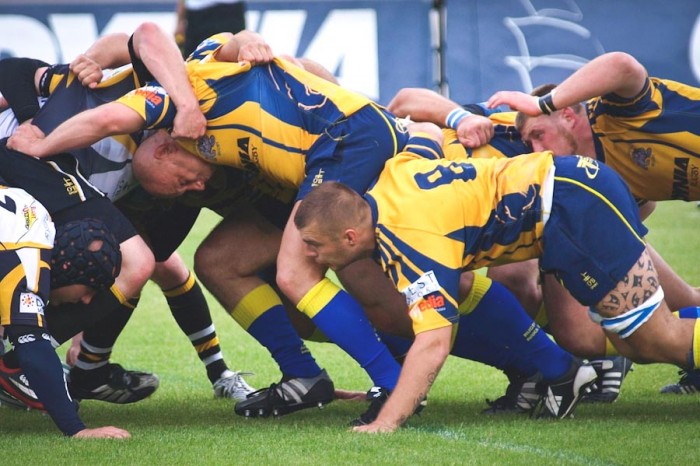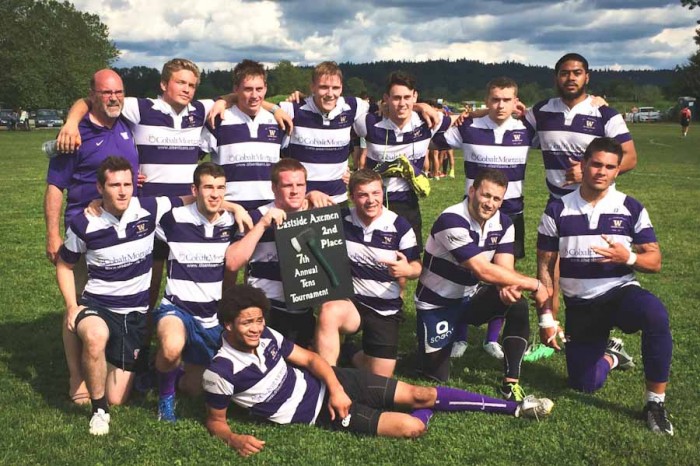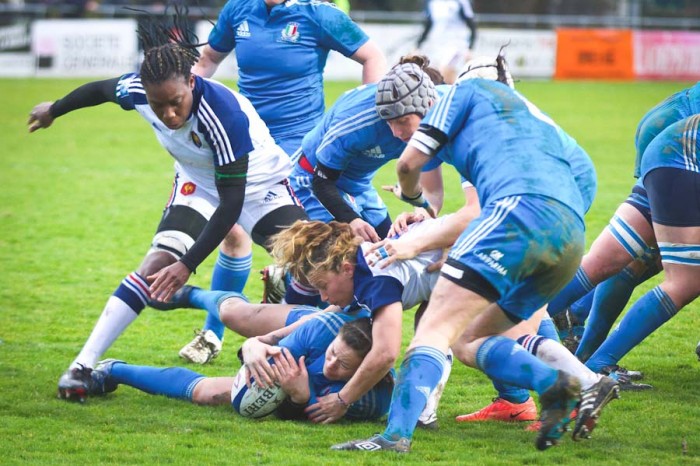Having Seahawks withdrawal this offseason? Is the World Cup just not doing it for you? You may have a new sport to turn.
Rugby, a full contact sport compared to football by many Americans, is increasingly popular among youth and adult men and women in the Pacific Northwest.
According to a report released by USA Rugby in 2011, 1.1 million Americans played rugby at least once in 2010 — nearly twice as many as just three years earlier. Of those players, 22 percent live in California, Oregon, or Washington.
“Anyone that is associated with rugby — there is an absolute love for the sport,” said Kevin Swiryn, who served as an assistant coach on this year’s University of Washington rugby team, and will take over as head coach next season. “The culture is so fascinating. It’s so much different than anything else in American sports culture.”
Traditionally played 15-on-15, Rugby is a full contact sport played on a soccer-sized field with two 40 minute halves. A 7-on-7 format, which will be included in the 2016 Olympics, is played with just two seven minute halves, with teams playing multiple matches in one or two day tournament format.
Teams can advance the ball by running, passing laterally or backwards, or kicking the ball forwards while the other team attempts to retrieve the ball back. Play is continuous until a team loses the ball forwards, the ball goes out of bounds, or a penalty is incurred.
Players attempt to score a “try” by running the ball into the goal area similar to football’s end zone, but it’s worth five points and the ensuing kick, similar to football’s extra point, is worth two points. A successful drop or penalty kick through the goal posts, similar to a field goal in football, is worth three points.
Similar to soccer, once a player is substituted for he or she may not re-enter the game. Players can also be given cards, yellow or red, for committing infractions. A yellow card warrants a ten minute penalty for the player. A red card or two yellow cards in the same game results in the player being removed from the game and a likely suspension in the future.
“Rugby is a sport for any type of athlete. Any size, height, weight, any speed, and any skill set,” Swiryn said. “The difference is the fastest, strongest, fittest guys aren’t the best, where in football maybe they are. The more skilled and more tactically savvy player will always be the better player on the field.”

Rugby was first played in England in the 19th century and is now a popular sport in New Zealand, Australia, South Africa, France, and Ireland. In the United States, there are over 450,000 players registered with USA Rugby, the governing body for the sport in the U.S.
While many Americans see rugby as a game similar to football, those who are close to the game of rugby know that besides the contact aspect, football and rugby are very different games. In football, players are given positions, where they use a distinct set of skills unique for their sport. In rugby, every player on the field must possess all of the skills needed to play both offense and defense.
“In football people have certain roles. The line will only block and the receivers only catch and run,” said Psalm Wooching, a member of the UW rugby team who also plays linebacker for the UW football team. “But in rugby everyone is equal. Everyone gets the ball, everyone runs the ball, and everyone tackles.”
With many Americans unfamiliar with the rules and structure of the game, Rugby has had a bit of a difficult time gaining the popularity of sports like football and basketball. But those inside the sport believe that if colleges and high schools take it more seriously, rugby could become very popular among youth and young adults in the U.S.
“I think people are scared of the unknown, they don’t understand (rugby) so it can be frustrating,” Swiryn said on the lack of rugby fans in the United States. “In the American society, people want to know things and want to know things now. It’s a complicated sport to learn as a spectator, that’s the difficulty of finding support.”
Another concern among those unfamiliar with the game is injuries.
Concussions have been a major concern in football lately, and it comes as no surprise that newcomers to rugby may think it is more brutal than football.
But according to a study by Jim McKenna, a professor at Leeds Metropolitan University in the U.K., concussions are a much bigger problem in football than in rugby.
In football more players use their pads, including their helmets, to make strong, violent hits, where in rugby players have to use a “wrap-up” tackle where the shoulder is used to make contact below the waist. Only the player with the ball can be tackled, and the usual injuries you see are just cuts and bruises from players hitting the ground repetitively.
Even UW football head coach Chris Petersen and defensive coordinator Peter Kwiatkowski have caught on to the rugby technique. While at Boise State, Petersen and Kwiatkowski reached out to the rugby coaches at the University of California and also went to a clinic with the local Idaho rugby club, Snake River, to talk about tackling form and how the wrap-up tackle can help prevent injuries such as concussions.
But injuries aren’t just magically eliminated by this different tackling technique. In a scrum, where the ball is thrown between both teams until one gains possession, spinal injuries have become a major problem at all rugby levels. 110 professional rugby players have been paralyzed playing rugby in Britain.
“Injuries are in every sport. In rugby you get cuts and bruises because you are falling down and hitting the ground,” Swiryn said. “Obviously your head can get hit by something but we don’t have as many of the major injuries in rugby.”

Rugby has seen some recent success in Seattle at both the collegiate and adult league level. In the beginning of May, the Washington Rugby Football Club traveled to Utah and defeated Utah Valley University to take home the D1-AA Championship.
At the adult level, the Seattle Rugby Football Club is regarded as one of the best clubs in the country and competes in matches and tournaments throughout the country as well as in Canada.
Tacoma, Bellingham, Everett, and Bellevue also all have their own rugby clubs.
“The rugby community in Seattle is very strong. There is a lot of rugby to be played at a lot of different levels,” said Tony Ursino, the president of the Seattle Rugby Football Club. “Everybody is very competitive against each other and everyone wants the bragging rights. It is a pretty tight community in Western Washington.”
With America’s fascination of football, it comes to no surprise that rugby is gaining popularity in the U.S. A full-contact sport featuring a variety of skills, rugby puts some of the best athletes in a continuous back-and-forth battle for 80 minutes. Before you know it football may not be the only sport showing up on your TV on Sundays.
“Rugby is a juggernaut waiting to happen in the United States,” Ursino said. “If we can find the right mix and the right support, it will be ready to explode.”



1 Comment
Comments are closed.